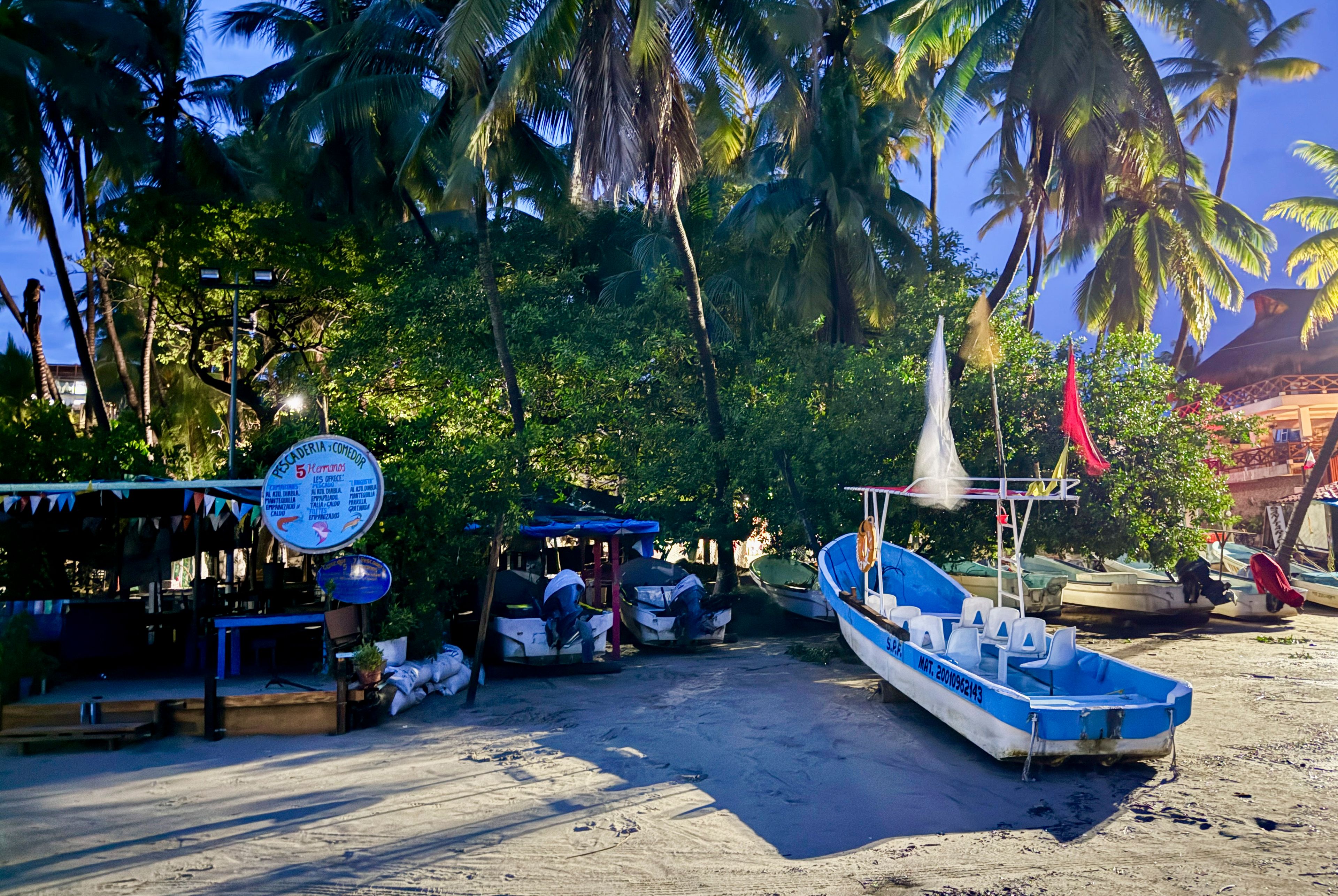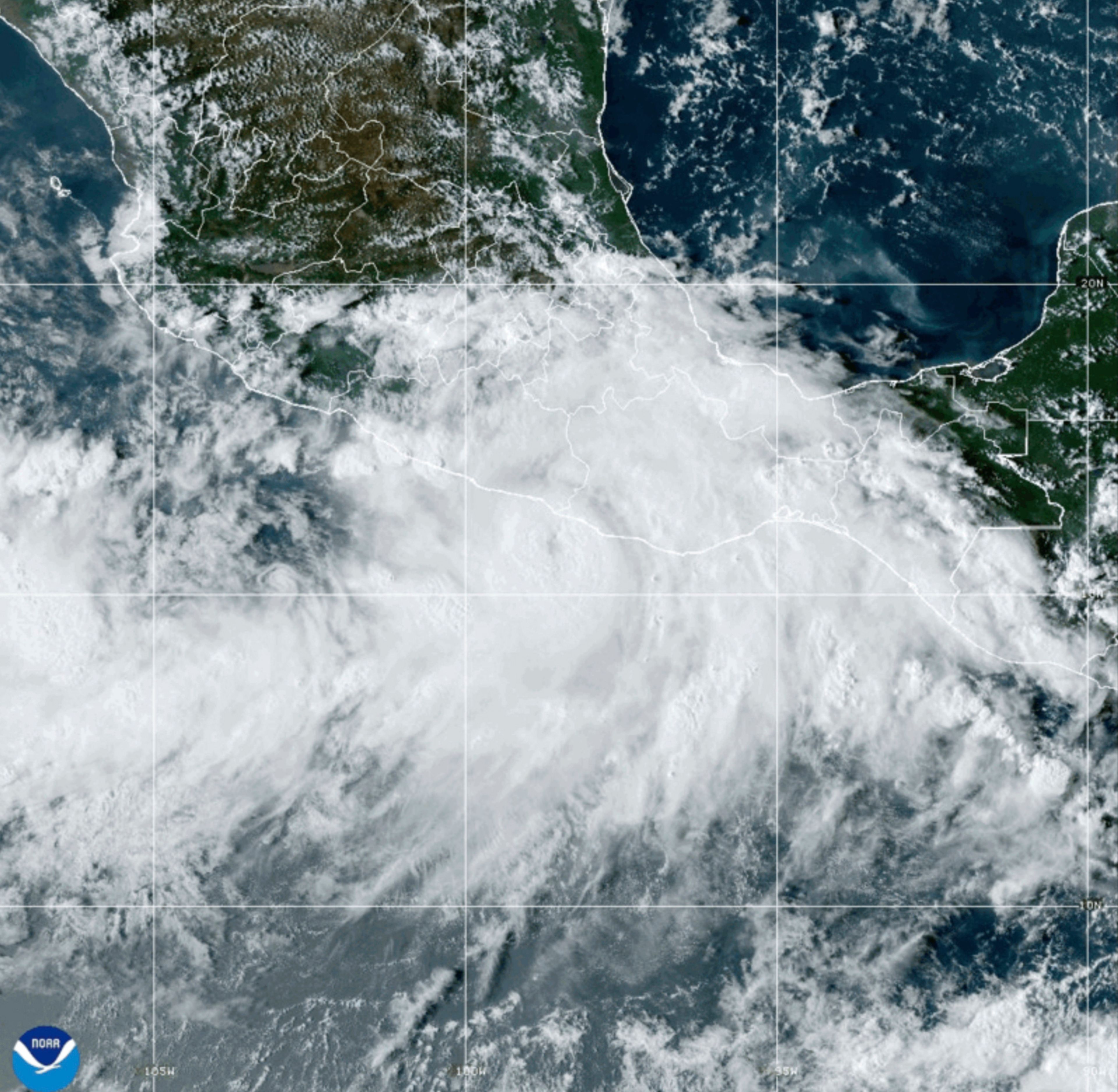Tropical Weather Latest: Storm in Caribbean could become hurricane, Tropical Storm John weakens
Two major weather systems are bringing heavy rain, high winds and more to Mexico's southern Pacific coast on one side and the Caribbean on the other.
Two major weather systems are bringing heavy rain, high winds and more to Mexico's southern Pacific coast on one side and the Caribbean on the other.
Tropical Storm John struck Mexico late Monday with life-threatening flood potential after growing into a Category 3 hurricane in a matter of hours. It came ashore near the town of Punta Maldonado before weakening back to tropical storm status early Tuesday and was expected to weaken rapidly. Still, the U.S. National Hurricane Center warned that the storm’s slow pace and heavy rains could cause potentially catastrophic flash flooding and mudslides.
Meanwhile, heavy rains and big waves battered the Cayman Islands on Tuesday as forecasters warned that a nearby cluster of thunderstorms could soon become a major hurricane en route to the southeast U.S. Hurricane watches were in effect for Florida’s Tampa Bay and from Englewood to Indian Pass, as well as for eastern Mexico from Cabo Catoche to Tulum and for Cuba’s Pinar del Rio province.
Follow AP's coverage of tropical weather at https://apnews.com/hub/hurricanes.
Here's the latest:
Florida governor declares state of emergency in most of the state's counties
TALLAHASSEE, Fla. — Florida Gov. Ron DeSantis has declared a state of emergency in 61 of the state’s 67 counties ahead of the storm that’s expected to become Hurricane Helene. DeSantis is urging residents across a broad swath of the state to prepare for potentially significant impacts, from the rural Panhandle region all the way down the Gulf coast to southwest Florida.
“We’re anticipating impacts, I mean, 100, 200 miles (161 to 322 kilometers) outside the eye of the storm, you could see with winds and you could see with surge,” DeSantis said. “We are going to see significant impacts no matter what happens.”
In a Tuesday morning update from the state’s emergency operations center in Tallahassee, DeSantis said it’s telling that forecasters are already projecting the storm system may become a major hurricane — even before it’s technically formed into a tropical storm.
DeSantis said the storm is reminiscent of Hurricane Michael, a category 5 hurricane that rapidly intensified and caught many residents off guard before plowing a path of destruction across the western Panhandle. Communities that are still rebuilding from previous storms could get battered again, DeSantis warned.
“The Big Bend and Panhandle should be especially prepared for direct impact,” DeSantis said.
2 dead after John hits Mexico’s Pacific coast
PUERTO ESCONDIDO, Mexico — Two people are dead after former hurricane John barreled into Mexico’s southern Pacific coast, blowing tin roofs off houses, triggering mudslides and toppling scores of trees, officials said Tuesday.
John grew into a major hurricane in a matter of hours Monday and made landfall about 80 miles (130 kilometers) east of the resort of Acapulco before declining to a tropical storm after moving inland.
John came ashore near the town of Punta Maldonado late Monday as a Category 3 hurricane with maximum sustained winds of 120 mph (190 kph). It weakened back to tropical storm status early Tuesday with maximum sustained wind speeds of 50 mph (85 kph) and was expected to weaken rapidly.
Evelyn Salgado, the governor of the coastal state of Guerrero, said two people died when the storm sent a mudslide crashing into their house on the remote mountain of Tlacoachistlahuaca (TLAH-ko-chis-tla-waka), further from the coast.
▶ Read more here.
Storm walloping Cayman Islands expected to become Tropical Storm Helene
Heavy rains and big waves lashed the Cayman Islands on Tuesday as forecasters warned that a nearby cluster of thunderstorms could soon become a major hurricane en route to the southeast U.S.
Hurricane watches were in effect Tuesday for Florida’s Tampa Bay and from Englewood to Indian Pass, as well as for eastern Mexico from Cabo Catoche to Tulum and for Cuba’s Pinar del Rio province. Hurricane conditions could be possible in parts of Cuba and Mexico early Wednesday and in parts of Florida late Wednesday and early Thursday, according to the National Hurricane Center.
“Now is the time to start preparing. If you’re in an evacuation zone, you should evacuate,” said Lisa Bucci, a hurricane specialist at the center. “Don’t be fooled by the way the storm looks at the moment. We are expecting it to rapidly intensify.”
She said people in regions under watches and warnings should be prepared to lose power and should have enough food and water for at least three days.
The disturbance is expected to move “over extremely deep and warm waters” that would fuel its intensification.
The disturbance is expected to become Tropical Storm Helene on Tuesday and then strengthen into a Category 3 hurricane before approaching the northeast Gulf Coast.
▶ Read more here.
Connect with the Southeast Missourian Newsroom:
For corrections to this story or other insights for the editor, click here. To submit a letter to the editor, click here. To learn about the Southeast Missourian’s AI Policy, click here.












